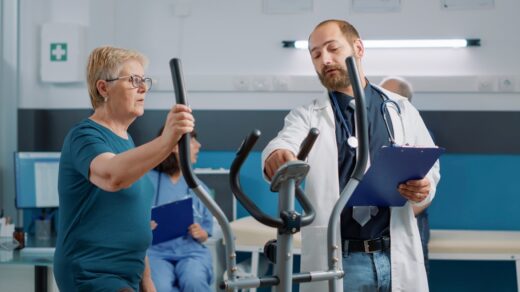
In a world where every voice should be heard, the sudden loss of that fundamental right can shatter one’s sense of self. Now, picture this struggle compounded by the fight against cancer. Yet, amid the heartbreak, there is a beacon of hope. Even for cancer patients robbed of their ability to speak and savor food, there exists a chance to reclaim these essential functions.
Below, John R. Callen discusses some of the rehabilitation methods for cancer patients with difficulties in speaking and swallowing.
Rehabilitation: The Road to Recovery
After enduring the rigors of cancer treatment or surgery, the last thing anyone desires is to be burdened with additional tasks. Yet, in this instance, undergoing rehabilitation becomes not only necessary but pivotal for their journey towards full recovery and an enhanced quality of life. Among the essential rehabilitation procedures are the following:
Reading – and Reading Comprehension
In the quest to restore a patient’s ability to communicate, speech therapists embark on a crucial first step: ensuring comprehension.
For individuals battling brain cancer, the presence of tumors can significantly impact cognitive abilities, as these growths exert pressure and potential damage on the delicate neural tissue. This underscores the urgency and importance of addressing cognitive functions as a cornerstone of speech rehabilitation.
Furthermore, even if the tumor doesn’t compromise the person’s thinking, surgery can.
Therefore, speech therapists often perform reading and comprehension testing to determine if a patient understands what they’re reading, ensuring their cognitive abilities aren’t compromised.
Once this ability is determined, the patient can take the next step in their treatment plan.
Speech
The intricate process of translating thoughts into spoken words doesn’t always unfold seamlessly within the human brain. To safeguard against miscommunication, dedicated therapists guide patients through the transformative journey of speech therapy.
Imagine a scenario where a person envisions a specific object, yet the word that escapes their lips is a different one entirely. This is where the art of therapy steps in, re-educating the patient to articulate the precise name for the item. In doing so, therapists facilitate a powerful reconnection between thought and speech, empowering the individual to communicate with newfound precision.
Additionally, some patients also suffer from a swallowing disorder as an effect of their cancer treatments – as explained in more detail below:

Swallowing
Swallowing therapy, also known as dysphagia therapy, plays a pivotal role in addressing these challenges and enhancing the overall quality of life for individuals affected by cancer.
One of the primary culprits behind swallowing difficulties in cancer patients is the potential damage caused by tumors or the side effects of treatments like chemotherapy and radiation therapy. These interventions, while critical for combating cancer, can inadvertently impact the muscles and structures involved in swallowing. As a result, patients may experience discomfort, pain, or even aspiration – a serious condition where food or liquid enters the airway instead of the digestive tract.
Swallowing therapy is a specialized form of rehabilitation designed to address these issues. Skilled therapists work with patients to assess their specific swallowing difficulties and develop tailored treatment plans. These plans often include a combination of exercises, techniques, and strategies to improve muscle strength and coordination, as well as to enhance overall swallowing function.
Through targeted exercises, patients learn to strengthen the muscles involved in swallowing, allowing for more efficient and controlled movement of food and liquids from the mouth to the stomach. Techniques like posture adjustments and specific swallowing maneuvers can further optimize the process, making it safer and more comfortable.
Beyond the physical aspects, swallowing therapy provides a supportive environment for patients to rebuild their confidence and regain a sense of normalcy in their daily lives. It offers a space to address any anxieties or concerns related to eating and swallowing, ensuring that patients feel empowered and in control of their own recovery.
Furthermore, this specific therapy often involves collaboration with a multidisciplinary team, including speech-language pathologists, oncologists, nutritionists, and other healthcare professionals. This integrated approach ensures that the patient’s comprehensive needs are addressed, further enhancing the effectiveness of the therapy.
Conclusion
Losing the ability to speak, swallow and eat normally while recovering from cancer treatments can take a toll on a patient. Fortunately, speech and swallowing therapies can help patients regain these very basic human needs.
As daunting as it is to witness a loved one deal with the disease, to these patients, fighting cancer means not only survival but a better quality of life.



